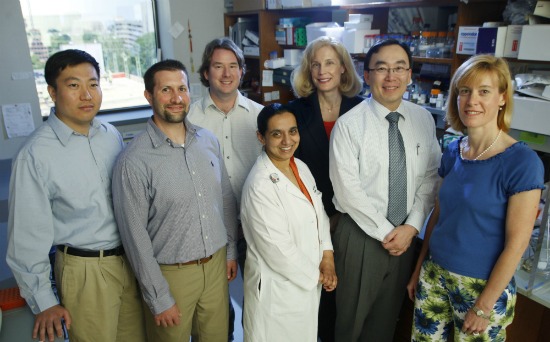
Vanderbilt-Ingram Cancer Center researchers have identified six subtypes of an aggressive and difficult-to-treat form of breast cancer, called triple-negative breast cancer (TNBC).
In the July issue of the Journal of Clinical Investigation, Cancer Center Director Jennifer Pietenpol, and colleagues describe the molecular features of these six distinct subtypes and identify chemotherapies to which the different subtypes respond in cultured cells and animal tumor models. Knowing the specific subtype could help physicians determine which therapies would work best in patients with TNBC and also inform the discovery and development of new drugs to treat this form of breast cancer, the authors suggest.
TNBCs recur more often, have poorer prognosis
TNBCs account for 10 percent to 20 percent of all breast cancers and tend to be more aggressive than other types of breast cancer. “It’s a pretty significant health problem from the standpoint that 11 percent of Caucasians, 17 percent of Hispanics, and 25 percent of African Americans have this type of breast cancer,” Pietenpol said.
While some patients with TNBC initially respond well to standard chemotherapy, these tumors are more likely to recur after treatment and have a poorer prognosis. Less than 30 percent of women with metastatic TNBC – which has spread outside the breast – survive five years.
The difficulty in treating these tumors stems from what they lack.
The term triple-negative breast cancer, explained Pietenpol, “is just a definition of what (the cancer) isn’t.”
TNBC tumors lack the estrogen receptors (ER) and progesterone receptors (PR) that drive about 60 percent of breast cancers. They also show no amplification of another receptor, called HER2, which drives about 20 percent to 30 percent of breast cancers.
The absence of these receptors means that the tumors are unlikely to respond to hormone therapies like tamoxifen and to therapies targeted to HER2 like trastuzumab (Herceptin).
Research describes six distinct subtypes of TNBC
Postdoctoral fellows Brian Lehmann and Joshua Bauer along with biostatistician Xi (Steven) Chen identified 587 cases of TNBC among 21 publicly-available breast cancer data sets. They then analyzed the genomic data to uncover unique gene expression profiles – sets of genes that are either turned “up” or “down” in the tumors.
Their analysis revealed six distinct subtypes – two “basal-like” types (BL1 and BL2) involving cell cycle and DNA damage response genes; two “mesenchymal” types (M and MSL) driven by genes involved in cell differentiation and growth factor pathways; an “immunomodulatory” (IM) group, driven by immune system genes; and a “luminal” subgroup (LAR) driven by androgen (male sex hormone) signaling.
The researchers also identified cell lines representing each of these subtypes and tested various chemotherapies in development or in clinical investigation in the cell lines. They also implanted these cells into mice to generate animal models of these tumor subtypes.
They found that the BL1 and BL2 subtypes responded to cisplatin; the M and MSL subtypes responded to dasatinib and experimental drug NVP-BEZ235; and the LAR subtypes were sensitive to bicalutamide.
Discovery could lead to new treatments
The findings provide a way of distinguishing molecular differences in this diverse group of breast cancers and suggest molecular targets for each subtype that may inform drug discovery and development efforts.
“In our opinion, the big breakthrough is just being able to say ‘this isn’t one disease,’” said Pietenpol.
Being able to distinguish distinct biological subtypes of TNBC could help guide the design of select clinical trials for subtypes of breast cancer, point toward new biomarkers for patient selection for a given therapy, and identify new targets for drug discovery, she said.
“[rquote]This really is the first step in translating genomic information into personalizing therapy for women with a very difficult-to-treat breast cancer.[/rquote]”
Other Vanderbilt authors on the study were Melinda Sanders, Bapsi Chakravarthy and Yu Shyr. The research was funded by the National Cancer Institute, the American Cancer Society and the Susan G. Komen Foundation.